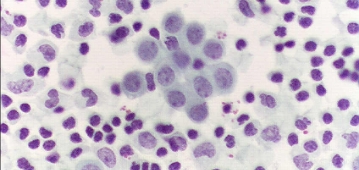
Release of IFNɣ by Acute Myeloid Leukemia Cells Remodels Bone Marrow Immune Microenvironment by Inducing Regulatory T Cells
DESCRIPTION
Abstract
Purpose: The stromal and immune bone marrow (BM) landscape is emerging as a crucial determinant for acute myeloid leukemia (AML). Regulatory T cells (Treg) are enriched in the AML microenvironment, but the underlying mechanisms are poorly elucidated. Here, we addressed the effect of IFNγ released by AML cells in BM Treg induction and its impact on AML prognosis.
Experimental Design: BM aspirates from patients with AML were subdivided according to IFNG expression. Gene expression profiles in INFγhigh and IFNγlow samples were compared by microarray and NanoString analysis and used to compute a prognostic index. The IFNγ release effect on the BM microenvironment was investigated in mesenchymal stromal cell (MSC)/AML cell cocultures. In mice, AML cells silenced for ifng expression were injected intrabone.
Results: IFNγhigh AML samples showed an upregulation of inflammatory genes, usually correlated with a good prognosis in cancer. In contrast, in patients with AML, high IFNG expression was associated with poor overall survival. Notably, IFNγ release by AML cells positively correlated with a higher BM suppressive Treg frequency. In coculture experiments, IFNγhigh AML cells modified MSC transcriptome by upregulating IFNγ-dependent genes related to Treg induction, including indoleamine 2,3-dioxygenase 1 (IDO1). IDO1 inhibitor abrogated the effect of IFNγ release by AML cells on MSC-derived Treg induction. In vivo, the genetic ablation of IFNγ production by AML cells reduced MSC IDO1 expression and Treg infiltration, hindering AML engraftment.
Conclusions: IFNγ release by AML cells induces an immune-regulatory program in MSCs and remodels BM immunologic landscape toward Treg induction, contributing to an immunotolerant microenvironment.